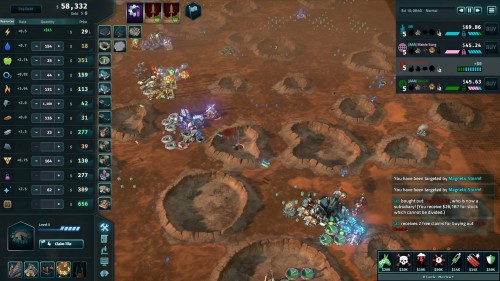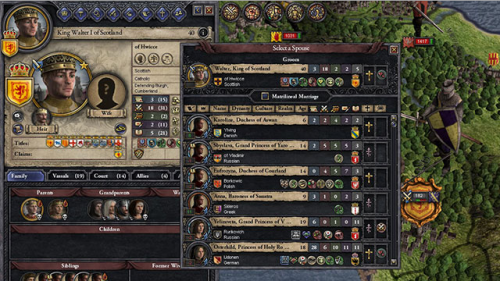Distribution of content in the game
Josh Bycer, the owner and editor-in-chief of the Game-Wisdom resource, told about what is wrong with Path of Exile and how to distribute content in the game.
I caught myself being infuriated by the Path of Exile game and its not the most thoughtful design. Misunderstanding how to distribute content is a common mistake, many indie developers make it. Distribution refers to the order in which the content and mechanics are shown to the player. It is extremely important to understand what this is.
Design priorities
The more complex the game, the more important it is to understand how to distribute the content correctly. If you dump everything on the player at once, then it will scare him off with a guarantee. Moreover, the user will not even be able to understand the principle of the game if he is “fed” from the first minute.
A good game designer understands that it is very important to be able to deliver content in a dosed manner. Regardless of the genre of the game. It is wrong to think that this applies only to tutorials. Even the appearance of the interface has to do with the ability to dose content, which I will tell you about in this text.
We have already discussed more than once that the order of appearance of mechanics in the game is determined by how important each of the mechanics is. The old truth: “learn to walk before you run.”
In relation to action games, this concept is easy to understand. Action games usually teach the player through the level design itself. If we are talking about other genres, then everything is more complicated: it is not so easy to explain to the player how everything works.
The Offworld Trading Company tutorial is divided into several sections
The more necessary and important the mechanics are for gameplay, the earlier it needs to be shown to the player.
For example, in the game Offworld Trading Company, the developers have divided the tutorial into several different sections. This tutorial addresses the systems needed by the player, in the order in which they become necessary in the game. So the player not only sees how the game works, but also understands how the gameplay is built.
What the player sees
Although tutorials and training levels are great, the player needs to explain what is happening not only at these two stages. Remember, the player believes that as soon as a feature becomes available to him, it should be used immediately.
A common mistake that indie developers make is “mess in the menu”. This is when all the menu options are available to the player from the very beginning, and no explanation is attached to them. If you got something from the player from the very beginning, it does not mean that everything is bad with the UI design. Since the option is not needed yet, it means that it should not be possible to use it. And period.
Many strategies, starting from the tutorial, bring down all the mechanics on the player. It’s very difficult to learn something like that
Some game designers manage to mess up even at the tutorial stage. If you just fasten the tutorial directly to the gameplay, it will mean that the player will have access to all the buttons and all the functionality from the first minute. That is, the player simply will not know what to focus on. I will add that if some pre-game settings affect the gameplay, then training should start from this stage.
It is also important to note that you do not need to switch back and forth from one game system to another during the tutorial. Even one system is quite difficult to understand, and if there are two or more of them, then it turns into torture for the player.
And now that I’ve noted all the important points, let’s move on to Path of Exile and talk about why it didn’t work out with me.
Learning in the process
When a player is given or shown something new, he concludes that this something needs to be applied immediately. Otherwise, why would the designer show it to him at all? This is where the ability to distribute content is needed – the player must receive information when he needs it.
Path of Exile has a super dungeon for high-level players. In order to get to it, you need to go through six special dungeons in acts 1 to 3. And only then will this super dungeon open. But the developers don’t tell the player about this, which is wrong.
Firstly, beginners don’t realize that these are dungeons for high-level players, since these dungeons appear in the first three acts out of four. Since they open before you have time to pump, going there is practically suicide. And even if the player skips these dungeons, the quest with them appears in the third act, and therefore it feels like they need to be passed right away.
Here is a perfect example of how not to distribute content. Another option is when the developer gives the player a new tool or ability, but there is nowhere to apply them. By contrast, in Zelda, the appearance of a new option is always accompanied by the opportunity to apply it. This is one of the greatest strengths of level design in the game.
In Zelda, new content and new rules are served very correctly – with the help of dungeons
Each new dungeon in Zelda requires, on the one hand, already existing knowledge about the game, and on the other – the use of new items. It turns out that by the end of each dungeon, the player has a new item with which he knows how to handle it and then uses it.
There is no such thing that a player receives a new item, and then does not know what to apply it to. If the player is not given a reason to use this item, then how will he know what it is needed for? A good example of how such a task is solved is Portal 1 and 2.
Let’s go back to the Path of Exile. It was necessary to open the dungeon in act 4, and inform the player that it is required to pump in order to pass it. So the user would understand that there is no need to go through the dungeon right now.
I want to mention another mistake that indie developers often make. If the gameplay is built around a meta-game or around the process of discovering new content, then do not give beginners the freedom of choice. It may seem that this is wrong. But the fact is that a beginner will not understand why he needs all these options. He will try to figure out how to play. And the variety of choices in this case will only complicate the game.
I really love the game Famous Explorers, but she often sins with this. The team a player chooses affects whether he wins or loses. And beginners have to choose even before they play for the first time and understand what’s what. In fairness, I note that the game gives hints. But they still need to be understood.
If you want the player to be interested in new content, then make the first few items very easy to open. So the progress will continue, and do not overload the newcomers with information.
Correct order
The order in which new mechanics, UI elements and systems will appear in the game is vital. Remember that a beginner sees the game for the first time, and it depends on you exactly how he will learn new things. The play-test here can only help to a certain extent. So your task as a game designer is to master the concept of gradual content submission.
Renown Explorers, although a good game, still overloads a new player
Understanding how to distribute the appearance of mechanics depending on their importance and necessity will help make the game more accessible to the player. In other words, the easier it is to learn your game, the more likely it is that someone will learn and play it.
One good thing is that the distribution of content – unless, of course, you really mess up – almost does not affect experienced players.
Players with experience are familiar with the basic mechanics and the order of their appearance. So if there are tutorials in the game at the first levels, give such users the opportunity to skip them.
Content distribution is a rather abstract concept, so it is not often remembered. Nevertheless, it is vital for the game. Anything that helps the user understand the game eventually turns into a competitive advantage.
Source: Gamasutra




